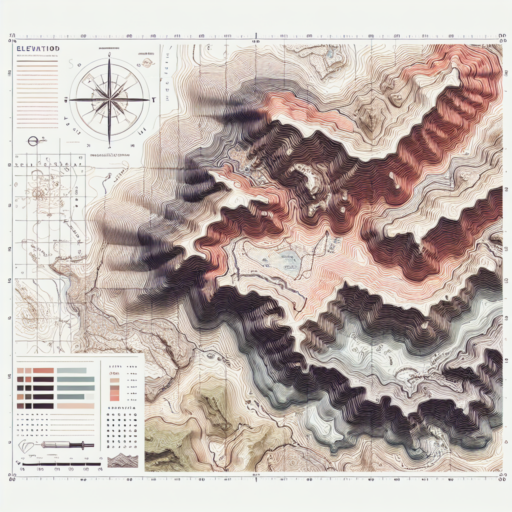What is the elevation gain of the New York City Marathon?
The New York City Marathon, known for its vibrant energy and diverse course, presents a unique challenge to runners in terms of elevation gain. Spanning the five boroughs of New York City, the marathon features a mix of flat sections, bridges, and rolling hills.
-> You need this to do your best time! <-
Understanding the elevation gain of the New York City Marathon is crucial for participants in their training and race day strategy. The course begins with one of its most significant elevations, the Verrazzano-Narrows Bridge, which runners cross in the first two miles. This bridge alone introduces an early test of endurance with its incline.
Overall, the total elevation gain for the New York City Marathon is approximately 900 feet (about 274 meters). This number might seem modest compared to trail marathons or races known for their steep climbs, but it’s the positioning of the hills throughout the course that can catch runners by surprise. For example, the ascent onto and off the Queensboro Bridge at the 15-mile mark is another notable elevation change that often challenges marathon participants.
No se han encontrado productos.
Are there hills in the NYC Marathon?
When considering the NYC Marathon, one question that frequently arises among runners is about the terrain – specifically, the presence of hills throughout the course. While New York City might be imagined as a sprawling urban landscape with towering skyscrapers and vast bridges, the terrain of the marathon itself presents a variety of challenges, including some notable hills that runners should prepare for.
The course of the NYC Marathon is famously known for its diversity, passing through all five boroughs of the city. However, it’s the bridges—integral parts of the race—that introduce significant elevation changes. Among these, the Verrazzano-Narrows Bridge at the very beginning poses the first major hill challenge. This bridge, connecting Staten Island and Brooklyn, offers not only a steep incline but also breathtaking views of the harbor, serving as a dramatic start to the 26.2-mile journey.
Other Notable Hills Along The Course
- The Queensboro Bridge, which connects Queens to Manhattan, is another point where runners face a lengthy incline. Although it is less steep than the Verrazzano-Narrows, the placement of this hill around the 15-mile mark makes it a test of endurance.
- Within the boroughs, particularly in Central Park, the rolling hills provide a continuous challenge towards the end of the marathon. These are not as steep as the bridges, but their occurrence late in the race tests the runners’ remaining energy and endurance.
- Lastly, the modest inclines in the Bronx and some parts of Fifth Avenue add to the cumulative elevation gain, making the NYC Marathon a true test of a runner’s hill-running capabilities.
In summary, while the NYC Marathon may not be characterized by mountainous terrain, the numerous bridges and city hills introduce significant elevation changes that can impact a runner’s strategy and performance. Knowing where these hills are situated and how steep they can be is crucial for runners looking to prepare comprehensively for race day.
Which marathon is harder, NY or Boston?
Deciding which marathon presents a greater challenge, New York (NY) or Boston, requires examining several key elements unique to each race. Both marathons are highlights in the long-distance running calendar, attracting runners from all over the globe. They offer distinct experiences driven by their respective courses, crowd support, and historical significance.
Elevation and Course Layout
The physical demands of a marathon can significantly differ based on the elevation and course layout. Boston’s marathon is infamous for its challenging hills, most notably Heartbreak Hill, which runners encounter in the final stages of the race. This uphill battle tests both physical stamina and mental resolve. In contrast, the NY marathon features its own set of challenges, with varying elevations across its five-borough course. However, it’s the bridges, especially the Verrazzano-Narrows Bridge at the start, that can be particularly daunting due to their size and the exposure to wind.
-> You need this to do your best time! <-
Climate and Weather Conditions
No se han encontrado productos.
Weather plays a critical role in the difficulty of marathons. The Boston Marathon is held in April, a time when the weather can be quite unpredictable, ranging from cold temperatures to unexpectedly warm conditions. These fluctuations can affect runners’ performances significantly. The NY marathon, taking place in November, often sees cooler temperatures, which can be ideal for long-distance running, but the prospect of wind and rain is always on the horizon, adding an extra layer of complexity.
Both the NY and Boston marathons have their own set of obstacles that challenge competitors in different ways. Whether it’s the physical layout of the course or the unpredictable weather conditions, runners must prepare extensively to tackle each marathon successfully. As such, determining which marathon is harder depends largely on individual strengths, weaknesses, and personal experiences.
What is elevation in marathon?
Elevation in marathon refers to the vertical distance that a runner must climb during the course of a marathon race. Unlike flat road races, marathons with significant elevation changes require runners to tackle uphill and downhill sections, significantly impacting their overall performance and strategy. Understanding the details of elevation is crucial for both amateur and seasoned marathoners as it affects pacing, energy expenditure, and training focus.
Marathons are characterized by their unique courses, which can significantly differ in elevation from one race to another. Some marathons are notorious for their challenging elevations, featuring steep climbs and descents, while others are prized for their flat and fast routes, offering minimal elevation changes. The elevation profile of a marathon is a critical factor that runners consider when selecting races, as it influences not only the difficulty level but also potential finishing times and personal bests.
Training for a marathon with significant elevation involves specialized preparation. Runners often incorporate hill repeats, strength training, and long runs on varied terrains into their training regimes. This tailored preparation helps in building the necessary endurance and strength to efficiently tackle elevation changes, ensuring runners are well-equipped to face the physical demands of the race.




